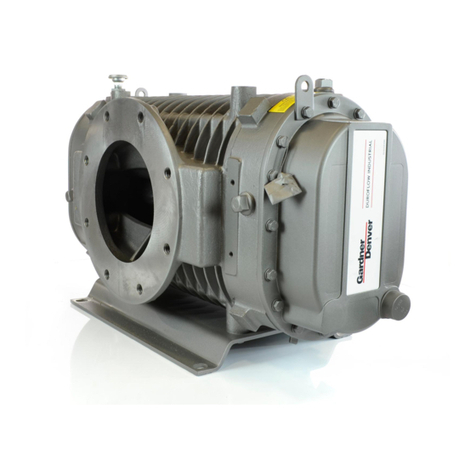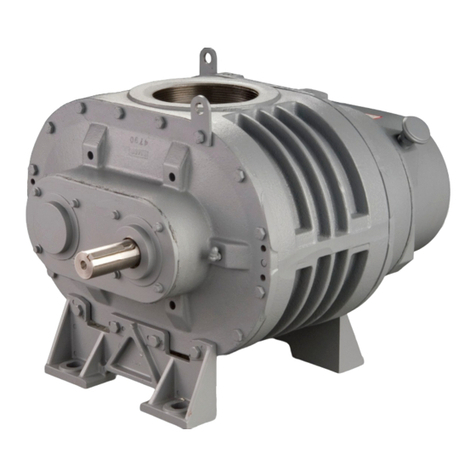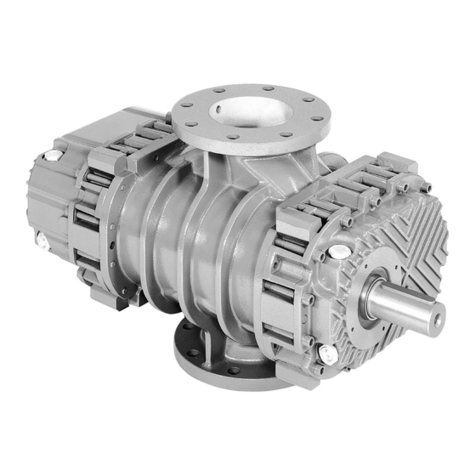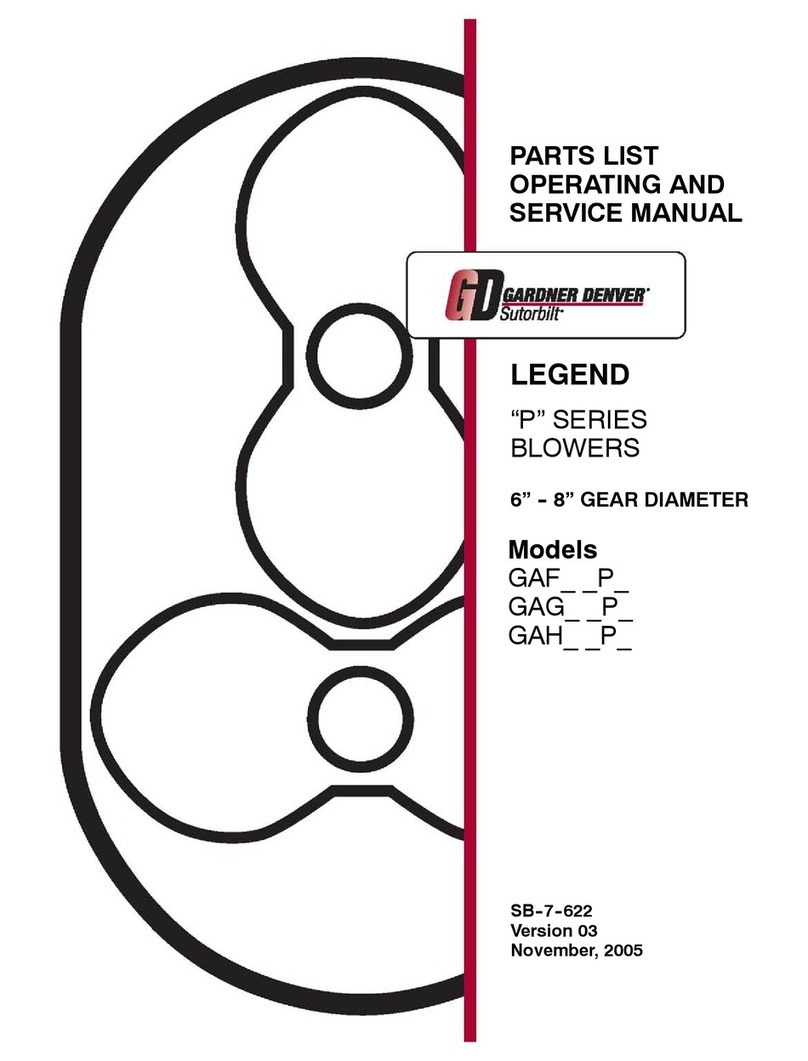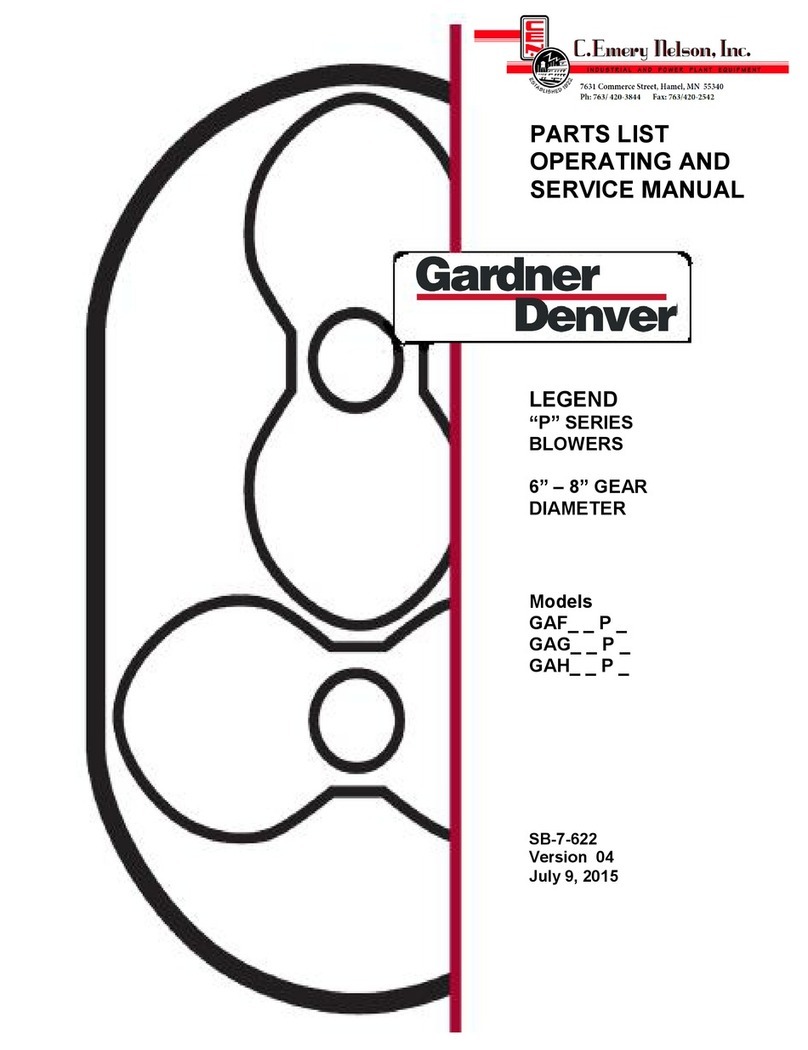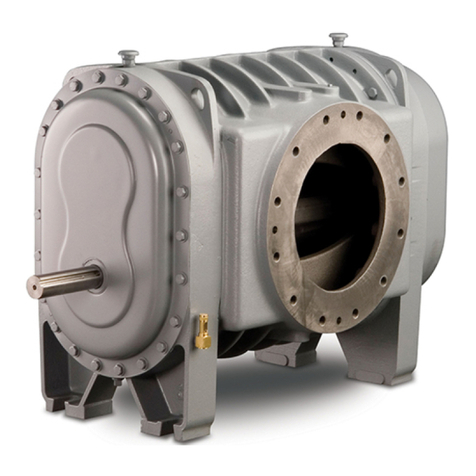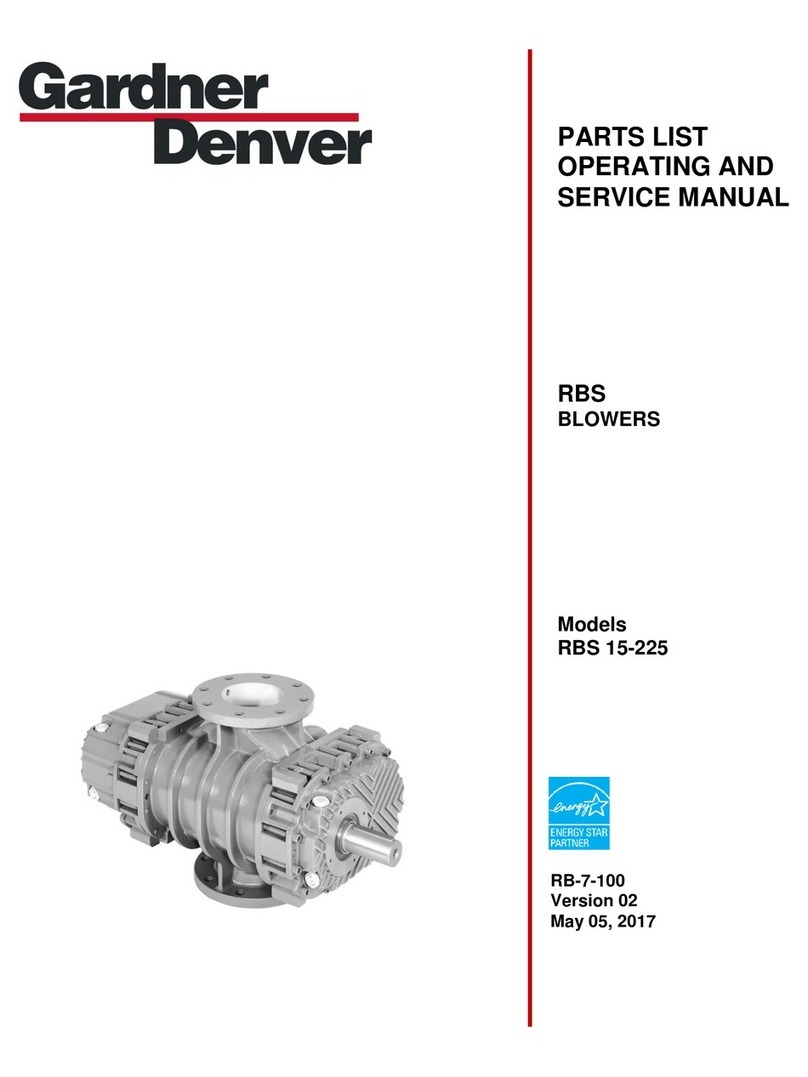
HF-7-600 Page v
INDEX
Air Filters And Filter Silencers ................................11
Assembly Instructions, Section 7............................21
Blower Startup Checklist........................................13
Disassembly Instructions, Section 6 .......................19
Disassembly Instructions........................................19
Drive Installation......................................................5
Equipment Check, Section 1
Equipment Check..................................................... 2
Filling Procedure......................................................8
Foundations.............................................................4
Installation, Section 2
Installaion ................................................................. 4
Introduction Your Key To Trouble Free Service.........1
Limitations.............................................................12
Location ..................................................................4
Lubrication Service..................................................8
Maintenance, Section 3
Maintenance............................................................. 8
Maintenance, Section 3............................................8
Matrix/Menu...........................................................Vi
Mounting Configurations..........................................4
Operation, Section 4
Operation.................................................................12
Parts List, Section 8...............................................29
Piping .....................................................................7
Recommended Lubricant.........................................8
Removing Protective Materials.................................3
Safety Precautions................................................. Iii
Safety Precautions................................................14
Section 7
Assembly Instructions.............................................21
Special Tools Required Section 5 ..........................15
Special Tools Required, Section 5
Special Tools Required...........................................15
Storage...................................................................2
Trouble Shooting...................................................14
Warranty...............................................................31
LIST OF ILLUSTRATION
FIGURE 2-1 –BLOWER MOUNTING CONFIGURATIONS......................................................................................4
FIGURE 2-2 –BELT DRIVE OVERHUNG LOAD CALCULATIONS..........................................................................6
FIGURE 3-1 - LUBRICATION.............................................................................................................................8
FIGURE 3-2 –APPROXIMATE OIL CAPACITIES (PINTS) ............................................................................8
FIGURE 3-3 –SYNTHETIC LUBRICANT CHART.........................................................................................10
FIGURE 4-1 –MAXIMUM OPERATING LIMITATIONS..........................................................................................12
FIGURE 5-1 - SEAL PROTECTION SLEEVE........................................................................................................ 15
FIGURE 5-2 –BEARING DRIVER......................................................................................................................... 15
FIGURE 5-3 –FALSE BEARING........................................................................................................................... 16
FIGURE 5-4 –INSERT DRIVER ........................................................................................................................... 16
FIGURE 5-5 –ASSEMBLY GUIDE FOR RINGS....................................................................................................17
FIGURE 5-6 –SLINGER/CARRIER DRIVER......................................................................................................... 17
FIGURE 5-7 –SEAL DRIVER...............................................................................................................................18
FIGURE 5-8 –NUT DRIVER.................................................................................................................................18
FIGURE 7-1 –INSTALL PISTON RINGS............................................................................................................... 21
FIGURE 7-2 –MEASURE STEP IN FALSE BEARING........................................................................................... 22
FIGURE 7-3 –PRESS BEARING ONTO ROTOR SHAFT......................................................................................23
FIGURE 7-4 –INSTALL BEARING RETAINING SCREWS.................................................................................... 23
FIGURE 7- 5 –INSTALL ROLLER BEARING........................................................................................................24
FIGURE 7-6 –TIGHTEN GEAR LOCKING SCREWS............................................................................................ 25
FIGURE 7-7 –TIGHTEN SETSCREWS................................................................................................................ 27
FIGURE 7-8 –MEASURE GEAR BACKLASH.......................................................................................................27

